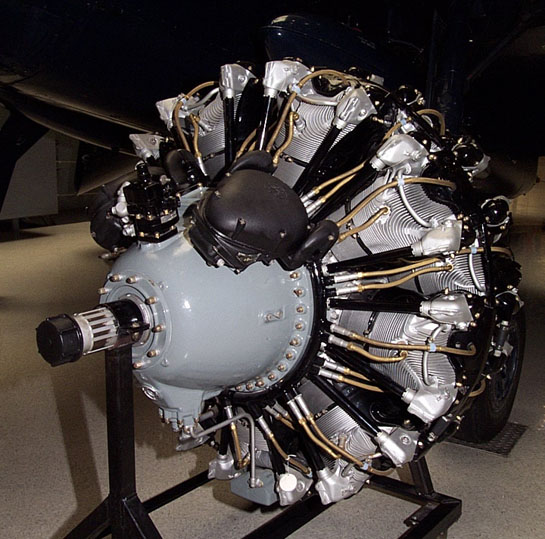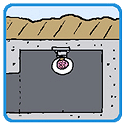|
Take good pictures of the bows and arrows there and send them to me.
|
|
|
|

|
| # ? May 18, 2024 07:23 |
|
Why and for how long has measuring the length of cannon barrels in multiples of calibre been a thing? Did it come about as a quick way of comparing ballistics of cannon of similar calibre, or was it something on the likes of only bothering to measure the barrel by how many cannon balls you could stuff in it?
|
|
|
|
FAUXTON posted:Fairly sure one of the IJN carriers (but not Akagi, that one had her DC team evacuated as the ship was abandoned) had something similar happen at Midway but with fire. Their whole firefighting/DC specialist team went into a smoke-filled engine room and never came back out and the ship ended up burning uncontrolled for several hours before sinking. Might have been Kaga but it could have been Hiryu or Soryu just as likely. I have shattered sword on Kindle but am phone posting and can't search the text to check. Fuso got buried in bombs so not her. I think maybe Soryu. Similarly nasty is the Franklin, where all the air uptakes for the lower sections of the ship were cut off by fire (one of the compromises of the Essex class being a relatively hasty evolution of the Yorktown class). Delivery McGee posted:Most of the battleships that weren't catastrophically killed (e.g. magazine explosions) went down on an even keel, because part of the built-in survivability of BBs was the ability to counterflood the non-holed side. Becuase BBs are kinda top-heavy, with all the guns and turret armor, so you really don't want to let it list. Kongo likely capsized, Fuso or Yamashiro likely capsized, Kirishima capsized. That's not a great record.
|
|
|
VKing posted:Why and for how long has measuring the length of cannon barrels in multiples of calibre been a thing? This mattered less with black powder, but once smokeless took over the primary limitation on how much of a powder charge you can use (and thus how much muzzle velocity you can get) is how long the barrel is compared to the diameter of the round. Thus, length in calibers is probably the single most important determiner of gun performance.
|
|
|
|
|
xthetenth posted:Fuso got buried in bombs so not her. I think maybe Soryu. Similarly nasty is the Franklin, where all the air uptakes for the lower sections of the ship were cut off by fire (one of the compromises of the Essex class being a relatively hasty evolution of the Yorktown class). Note the country that built those. If we're talking about whether BBs roll or not on death the country that made them the most hilariously top heavy and gave the least poo poo about damage control probably isn't the one to point to.
|
|
|
|
Cyrano4747 posted:Note the country that built those. If we're talking about whether BBs roll or not on death the country that made them the most hilariously top heavy and gave the least poo poo about damage control probably isn't the one to point to. I'm pretty sure all battleships are just too top-heavy in general. Just from memory, I know that Barham rolled, Repulse rolled, Prince of Wales rolled, and Oklahoma rolled, and that plus the IJN is already most of the battleships lost during the war.
|
|
|
|
Jobbo_Fett posted:Technically his diary has one entry after his "last". He was with General Lucius Clay on an official plane to Berlin at the start of the Berlin Airlift. Not sure if he helped or whatever, but he studied economics at some point, and his obituary states: Think of it as filing a claim for SSDI. Except for a region. European Recovery Program is better known as "The Marshall Plan",
|
|
|
|
What exactly is a "Backhand blow"; in Hoi4 it's a thing in the Soviet tree; is it a general mobile warfare thing or is there something specific about deep battle where it applies?
|
|
|
|
A "backhand blow" is a counterattack launched right when your enemy is about to break through. Being fully committed to attack, they will not be able to defend against your own attack very well.
|
|
|
|
|
Raenir Salazar posted:What exactly is a "Backhand blow"; in Hoi4 it's a thing in the Soviet tree; is it a general mobile warfare thing or is there something specific about deep battle where it applies? It's more or less a counteroffensive executed during an enemy advance, after the enemy has committed themselves to the attack and at the point they believe you will be retreating. http://www.historynet.com/backhand-blow-kharkov-1943.htm Weird that it's in the Soviet tree though.
|
|
|
|
It's the penultimate tech in the Modern Blitzkrieg subtree of the mobile warfare doctrine also, the Deep Battle subtree just gets a better version. They seem to think it means something else, however, since they tooltip says "Rather than fighting for every inch of ground, enemy penetrations are largely avoided until they have extended themselves, at which point they can be cut off and destroyed by counterattacks." Makes it seem like some kind of avoid and envelop type of thing. Might be reading it wrong, though. Malleum fucked around with this message at 21:41 on Jan 28, 2017 |
|
|
|
Malleum posted:It's the penultimate tech in the Modern Blitzkrieg subtree of the mobile warfare doctrine also, the Deep Battle subtree just gets a better version. They seem to think it means something else, however, since they tooltip says "Rather than fighting for every inch of ground, enemy penetrations are largely avoided until they have extended themselves, at which point they can be cut off and destroyed by counterattacks." It sounds like they had the gist of it and punched it up a bit, maybe.
|
|
|
|
spectralent posted:It sounds like they had the gist of it and punched it up a bit, maybe. Yeah, I'm not sure about the whole "allow them in" thing but that's generally how it went except it was kind of a way for the Wehrmacht to reset the front after absorbing some pretty substantial losses. They just reorganized along the flanks of the offensive and hit back when the Soviet commanders weren't expecting much more than a defended withdrawal at most.
|
|
|
|
The Germans had been into an "elastic" front since 1917, the idea was that instead of trying to defend every inch of trench you withdraw and then strike back. Glantz mentions this in When Titans Clash, which also goes into the interwar precursors to this idea's Soviet counterpart.
|
|
|
|
[url=http://tankarchives.blogspot.com/2017/01/pzkpfwiii-ausf-christie-german-style.html]PzIII Ausf A[/b] Queue: PzIII Ausf. B through D, SR tanks, Soviet tractor tanks, HTZ-16, Char B1 bis, Char B1 ter Available for request:  T2E1 Light Tank M3A1 Combat Car M1 Howitzer Motor Carriage T18 M10 Wolverine NEW  A1E1 Independent Infantry Tank Mk.I  LTP T-37 with ShKAS ZIK-20 T-12 and T-24 Wartime modifications of the T-37 and T-38 SG-122 76 mm gun mod of the Matilda Tank destroyers on the T-30 and T-40 chassis 45 mm M-42 gun 02SS Aerosan SU-76 prototype LPP-25 L-10 and L-30 Strv m/40 Strv m/42 Landsverk prototypes 1943-1951 EMIL and KRV Strv 103  Trials of the TKS and C2P in the USSR 37 mm anti-tank gun  SR tanks  Renault NC Renault D1 Renault R35 Renault D2 Renault R40 25 mm Hotchkiss gun PzI Ausf. B PzI Ausf. C PzII Ausf. a though b PzII Ausf. c through C PzII trials in the USSR Pak 97/38 Pz.Sfl.IVb 7.5 cm Pak 41 Hummel s.FH. 18 LT vz 35 LT vz 38 NEW CKD TNH and LTP (Tanque 39)
|
|
|
|
welp
|
|
|
|
PzIII Ausf A Queue: PzIII Ausf. B through D, SR tanks, Soviet tractor tanks, HTZ-16, Char B1 bis, Char B1 ter, Strv 103, 02SS Aerosan Available for request:  T2E1 Light Tank M3A1 Combat Car M1 Howitzer Motor Carriage T18 M10 Wolverine NEW  A1E1 Independent Infantry Tank Mk.I  LTP T-37 with ShKAS ZIK-20 T-12 and T-24 Wartime modifications of the T-37 and T-38 SG-122 76 mm gun mod of the Matilda Tank destroyers on the T-30 and T-40 chassis 45 mm M-42 gun SU-76 prototype LPP-25 L-10 and L-30 Strv m/40 Strv m/42 Landsverk prototypes 1943-1951 EMIL and KRV  Trials of the TKS and C2P in the USSR 37 mm anti-tank gun  SR tanks  Renault NC Renault D1 Renault R35 Renault D2 Renault R40 25 mm Hotchkiss gun PzI Ausf. B PzI Ausf. C PzII Ausf. a though b PzII Ausf. c through C PzII trials in the USSR Pak 97/38 Pz.Sfl.IVb 7.5 cm Pak 41 Hummel s.FH. 18 LT vz 35 LT vz 38 NEW CKD TNH and LTP (Tanque 39) Ensign Expendable fucked around with this message at 04:27 on Jan 29, 2017 |
|
|
|
HEY GAIL posted:The 1870s are recognisably different from the things i'm familiar with though. If war got modern by the 1890s, things are definitely beginning to change by the 1870s. A transition period is still a beginning. The Crimean War (~c. 1854) was the first war where the people back home really saw the horrors of war - that's often said about the US in Vietnam because it was on the evening news, but Balaclava was in the newspapers with (not entirely truthful) photos, which was pretty much the equivalent at the time. And I'm fairly sure that people were starting to realize that war was not so much an honourable gentlemen's game and actually kinda sucked around Bonaparte and Wellington's time. (Which was also the first time I've read of where a capital ship just ceased to exist in a massive fireball). quote:Shortly after the battle, Nelson was presented with a coffin carved from a piece of the main mast of Orient Cyrano4747 posted:Note the country that built those. If we're talking about whether BBs roll or not on death the country that made them the most hilariously top heavy and gave the least poo poo about damage control probably isn't the one to point to. Better way to state it: BBs either rolled over (if surprised/overmatched) or go down like a u-boat (if slugging it out with another BB), relatively few of 'em did the Titanic thing, going down end-first (I'm sure there are plenty of examples of that too). Actually, how many BBs (let's say dreadnought or better) died to gunfire? Kirishima, and ... that's the only one I know of? It's pretty much accepted that Bismarck was scuttled, possibly because the RN was aiming high to get revenge for Hood -- leave it floating but kill as many of 'em as possible. E: that'd probably have been considered a war crime if it were the other way 'round. Chillbro Baggins fucked around with this message at 13:12 on Jan 29, 2017 |
|
|
|
Delivery McGee posted:
https://en.wikipedia.org/wiki/List_of_sunken_battleships
|
|
|
|
Yeah, but it doesn't show cause of death past "who pulled the plug". Also lol, Hood in the "scuttled" list, wait, what? -- 'twas the previous Hood. The famous one was a BC that blew up, as British BCs do. Chillbro Baggins fucked around with this message at 13:11 on Jan 29, 2017 |
|
|
|
Delivery McGee posted:Yeah, but it doesn't show cause of death past "who pulled the plug". Also lol, Hood in the "scuttled" list, wait, what? -- 'twas the previous Hood. The famous one was a BC that blew up, as British BCs do. Well, they are organized by fate (Sunk in Combat, etc) and anything more specific would just require clicking on the ship's wiki link 
|
|
|
|
Delivery McGee posted:(Which was also the first time I've read of where a capital ship just ceased to exist in a massive fireball). 
|
|
|
|
PzIII Ausf. B through D Queue: PzIII Ausf. B through D, SR tanks, Soviet tractor tanks, HTZ-16, Char B1 bis, Char B1 ter, Strv 103, 02SS Aerosan, Pz.Sfl.IVb, CKD TNH and LTP (Tanque 39), Emil and KRV Available for request:  T2E1 Light Tank M3A1 Combat Car M1 Howitzer Motor Carriage T18 M10 Wolverine NEW  A1E1 Independent Infantry Tank Mk.I  LTP T-37 with ShKAS ZIK-20 T-12 and T-24 Wartime modifications of the T-37 and T-38 SG-122 76 mm gun mod of the Matilda Tank destroyers on the T-30 and T-40 chassis 45 mm M-42 gun SU-76 prototype LPP-25 L-10 and L-30 Strv m/40 Strv m/42 Landsverk prototypes 1943-1951  Trials of the TKS and C2P in the USSR 37 mm anti-tank gun  SR tanks  Renault NC Renault D1 Renault R35 Renault D2 Renault R40 25 mm Hotchkiss gun PzI Ausf. B PzI Ausf. C PzII Ausf. a though b PzII Ausf. c through C PzII trials in the USSR Pak 97/38 7.5 cm Pak 41 Hummel s.FH. 18 LT vz 35 LT vz 38 NEW Ensign Expendable fucked around with this message at 00:33 on Jan 30, 2017 |
|
|
|
Delivery McGee posted:That's a bit morbid, innit? And yes, he did make use of it seven years later. Not really morbid, but more of a memento mori on the part of Capt. Hallowell: (From Robert Southey's Life of Nelson, 1813) Robert Southey posted:No present sent to Nelson after the battle of the Nile was so extraordinary as that which he received from his gallant friend Captain Hallowell of the Swiftsure ; and the idea could have occured only to a very original mind. After L'Orient blew up part of her mainmast was taken aboard the Swiftsure and in May 1799 Captain Hallowell, fearing the effect of all the praise and flattery lavished on his chief, determined to remind him that he was mortal. He therefore ordered a coffin to be made out of part of L'Orient's mast ; and was so careful that nothing whatever should be used in its construction that was not taken from it.... Lord Nelson highly appreciated the present, and for some time had it placed upright, with the lid on, against the bulk-head of his cabin behind the chair on which he sat at dinner. At length, by the entreaties of an old servant, he was prevailed upon to allow it to be carried below. When his lordship left the Vanguard the coffin was removed into the Foudroyant, where it remained for many days on the gratings of the quarterdeck.
|
|
|
|
Pz.Sfl.IVb and Tanque 39 please.
|
|
|
|
Baltic Sea milhist thread brethren and sisteren(?), 'sisu' seems like a good word for this thread, but the article doesn't really define it except as being 'poo poo-tons' stronger than 'grit.' Little help?
|
|
|
|
Nebakenezzer posted:Baltic Sea milhist thread brethren and sisteren(?) 
|
|
|
|
this I wrote brethren and I thought "is that gendered?" Now I'm thinking about it and thinking brethren is maybe not gendered - I regret using the word entirely
|
|
|
|
Also, Taiho, lol IJN damage control.
|
|
|
|
I found a guy named Zander Sontag, which sounds like a minor character in a Joss Whedon TV show, if Joss Whedon was german
|
|
|
|
Joss Whedon sucks.
|
|
|
|
zander sontag was probably an ok guy though
|
|
|
|
Note to self: never, ever board a Swedish flagship.
|
|
|
|
From several pages ago but thanks to whomever recommended the nuclear secrecy blog. I've been tearing through the archives.
|
|
|
|
GreyjoyBastard posted:Note to self: never, ever board a Swedish flagship. Cythereal posted:Also, Taiho, lol IJN damage control. Yeah IJN carriers are deffs hosed, and Sweden ... is real good at making fishing reels.
|
|
|
|
WW2 Data British Photoflash bombs and Flares, what's the difference? What purpose does an aircraft illuminator serve? What's the point of a "hooded" flare? How strong are some of the flares in terms of candlepower (candela)? What kind of parachutes did they use, and how wide were they in general? All that and more at the blog! At least one flare shown in the post has a candlepower of 2,000,000, or 25,400,000 lumens, or about 6684 times stronger than a "tactical flashlight" on the higher end of the power scale (3800 lumens).
|
|
|
|
How bad is it for your eyes to be blinded by one of those things?
|
|
|
|
What eyes?
|
|
|
|
Boiled Water posted:How bad is it for your eyes to be blinded by one of those things? I've had some pretty powerful flashlights shone in my face because youth and stupidity, and we're probably talking 2000~ and less lumens and they leave spots in your eyes for a few minutes at least. Obviously, depends on exposure and proximity to the light source so it depends. I'd imagine that if it went off next to you and you were looking right at it, you'd be temporarily blinded at the very least.
|
|
|
|

|
| # ? May 18, 2024 07:23 |
|
So I've mentioned a few times, this relatively minor but (ostensibly) remarkable piece of engineering from WWII Japan: the Nakajima Homare. Sadly it doesn't seem like there is a whole lot of information on in, at least in English, so I'm still a little bit in the dark about what its deal is. I'll post a bunch of info and thoughts and see where this goes. So, this engine was...an anomaly, for a number of reasons. The first, and most significant to me is that it came from Japan. While post-war Japanese industry has pretty much thoroughly mastered the piston engine, during WWII, and especially for aircraft, they generally sucked when compared with their peers/competitors. They preferred radial engines; in general their designs seriously lagged behind Germany/US/UK in most major performance categories; at the same time they so neglected inline engines that their only competent variant was a license built DB-600 series. So, their aircraft designers suffered through years of supbar engines, forcing them to come up with some pretty brilliant/elegant solutions to get around their shortcomings....and then all of a drat sudden in mid-1943, from out of nowhere comes this absolute world-beater of an engine in the Homare. It was the biggest reason being the late-war Japanese fighters (mainly the Ki-84 and N1K) being so formidable in spite of practically every imaginable operational shortcoming; specs-wise it shamed every other piston engine that saw action during the war. It was developed and fielded during a period of extreme drought with regard to metals and quality fuel, and in an environment that was...not particularly conducive to major engineering projects in general (due to large amounts of high explosive and incendiary devices falling from the sky on a regular basis). It certainly wasn't problem free though, like with every Japanese engine it had reliability issues and it was an absolute monster to maintain, but once the kinks were worked out of manufacturing and maintenance processes its reputation seems to be, at least from the Japanese, to be pretty sterling. Here's (I think) a picture of one, and also a gorgeous F-86:  Here's the Pratt and Whitney R-2800, which is rightly regarded as the premier all-around aero engine of the war. I'll use it as kind of a comparison from here on out.  So on first glance, you can clearly see the differences in workmanship: the American engine is pretty exquisitely crafted: very clean lines on the cooling fins, hardline tubing, etc. The Homare just looks rougher, which is pretty consistent with what postwar intel sources say about it. The curious thing is usually with aero engines, rougher construction means poorer tolerances and more weight, but it didn't in this case. Some vital specs comparing it to other 18 cylinder late-war monsters. I won't get into variants and whatnot because who gives a gently caress Homare Output: 1990 hp Power:weight - 1.11 hp/lb Specific Power - .91 hp/cuin Frontal Area - 118 cm Compression Ratio - 8.0 R-2800 (powered the F6F, F4U, P-47, among others) Output: 2100 hp Power:weight - .89 hp/lb Specific Power - .75 hp/cuin Frontal Area - 134 cm Compression Ratio - 6.75 Bristol Centaurus (powered the Tempest and Fury, later design) Output: 2520 hp Power:weight - .77 hp/lb Specific Power - .94 hp/cuin Frontal Area - 140 cm Compression Ratio - 7.2 BMW-801 (not an 18 cylinder and much earlier, but for comparison's sake...powered the Fw-190) Output: 1539 hp Power:weight - .69 hp/lb Specific Power - .6 hp/cuin Frontal Area - 129 cm Compression Ratio - 6.5 Rolls Royce Griffon (not a radial, but just for comparison's sake...powered the late war Spitfires) Output: ~2000 hp Power:weight: 1.03 hp/lb Specific Power: .91 hp/cuin Compression Radio: 6 A quick explanation of why these numbers are sort of important: output and power:weight should be obvious, specific power (that is, how much power you get out of a given displacement) is related to weight, but also to manufacturing cost and internal volume (you want the least amount of both). Frontal area is basically engine diameter and it is just as important if not moreso than power:weight for an aircraft - for a radial-powered aircraft the engine is a huge source of drag; minimizing the amount of frontal area decreases said drag and thus is very desirable. Compression ratio is just how much the fuel/air mixture gets squished by the cylinder before ignition. So, for a WWII airplane nerd, the Homare's specs are pretty eye opening. It isn't just better than the most highly regarded engines of the era, it is a LOT better. Its frontal area is comparable to the tiny cute prewar radials, its power/weight is, I think, the best of any widely manufactured aero engine of the era. What has confused/baffled me for a while is HOW, especially considering that the Japanese didn't have access to miracles like 150 octane fuel and decent alloys. My hypothesis has three parts: 1: They cranked the compression ratio way the gently caress up. Compression ratio is a pretty good general indicator of engine efficiency - a modern Honda D engine runs about 10, a high performance road car might get as high as 13, the fantastic naturally aspirated vintage F1 engines could get as high as 17. Most WWII aero engines hovered between 6 and 7, and it was generally not thought of to jack it much higher...it caused more engine wear, more chances for detonation (which could be catastrophic at those power levels), and increased the demands on machining quality and whatnot during manufacturing. It looks like though that the Japanese engineers said gently caress it and pumped out a much higher performance engine despite these issues. 2. They used direct fuel injection on a radial. This wasn't a huge deal for inlines....fuel injection had been used widely since early in the war. However DFI was a lot trickier on radials...instead of having a nice injector that could just run fuel along the length of an inline engine, you had to inject fuel into each cylinder that was organized in, well, a radial fashion, and this was a pain in the rear end. You also didn't have the issues of losing power under negative G's that carbureted inlines had, since there was always at least a few cylinders that were upright...so most radials just used a carburetor, albeit in the case of the R-2800, a very high tech one that wasn't affected by G forces. 3. They worked out some sort of efficiency in cooling that no one else figured out. This is...pure speculation on my part, but it is very hard to explain how they limited the frontal area of the engine so much. People smarter than me have speculated that the figured out some manner of increasing the airflow to the rear cylinders which was a huge deal for a two row radial....Wright tried something similar with the mammoth 3350 with the result that the rear cylinders tended to burst into flames and burn the wing off of its parent B-29 with alarming regularity. The Homare certainly wasn't without its performance weaknesses....the biggest one was high altitude performance, and most of that problem can be directed squarely at its mediocre boost system. This makes sense given the Japanese limitations with alloys - these engines ran incredibly hot, but the turbo/superchargers ran even hotter. If you didn't have the metal that could deal with the heat, you had to turn it down. Hence, the Ki-84 and N1K were always outclassed by the USAAF heavies at high altitude, what with their multi-stage fancy pants boost systems. It was also, as mentioned earlier, pretty temperamental, to which you could certainly point to the complex design features as a contributing factor. That being said, its performance, especially considering the limitations (the largest being it had to rely on 87-92 octane fuel instead of the 120 or 150 poo poo the Americans and Brits got) is pretty remarkable. This concludes my thoughts on a relatively unimportant bit of WWII; please critique, especially if you're someone who knows engines better than I do, which should be most of you.
|
|
|



















 Bad Angus! Bad!
Bad Angus! Bad!














